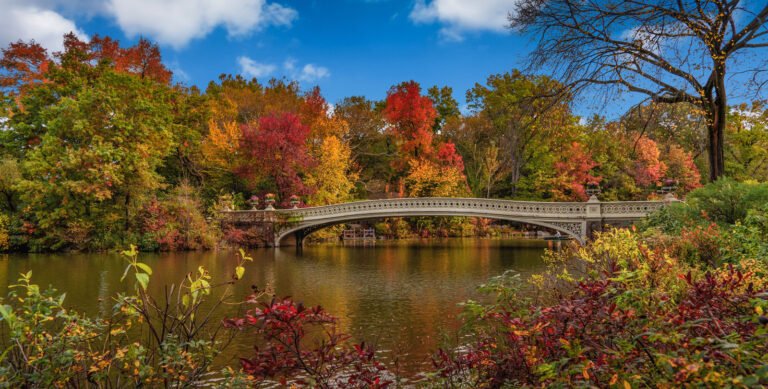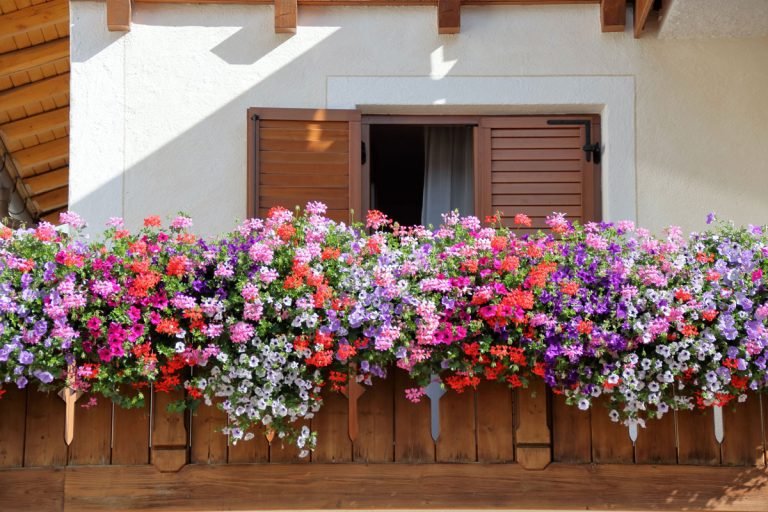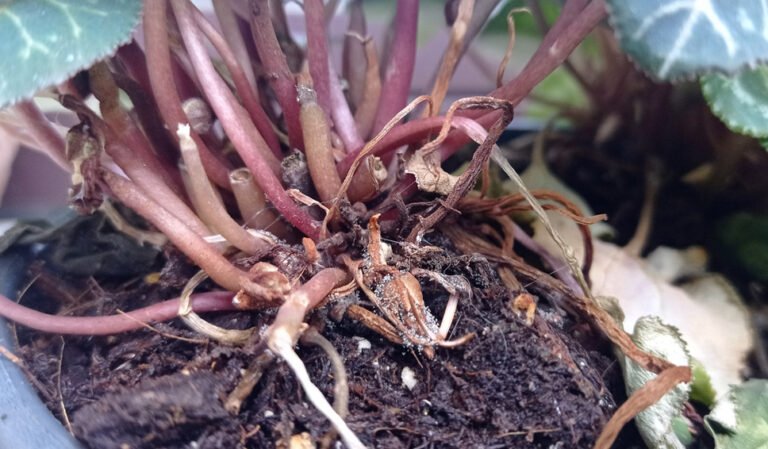A terrace or a balcony well designed at a landscape level can become an element that gives high added value to a living space enhancing it not only aesthetically but also with significant environmental benefits as the reduction of the heat island effect or an increase in mental well-being as a refuge from urban stress; let’s try to make it as welcoming as possible with some advice and suggestions.
1. Exposure and size
2. Focal points and privacy
3. Plant species
4. Furniture and flooring
5. Irrigation and lighting
Exposure and size
The first phase of planning and design starts from the knowledge of the exposure of our terrace to allow us to understand how to subdivide the spaces and which botanical species to choose which species to choose as some grow and bloom better in the sun, others in half-shade and so on. Flowers play a primary role in green design to increase its charm, so let’s not underestimate the exposure aspect! Another important consideration is the size and shape of your outdoor space. Before proceeding with purchases and installations we measure the available surface area and with the help of an expert we can draw the floor plan understanding how to make the best use of the available surface by consistently organizing volumes, plants and furnishings. If our terrace is large enough we can create a multifunctional place with a relaxing area and, possibly, a pergola.
Focal points and privacy
Let’s observe what surrounds us and identify one or more corners that attract our vision, enhancing them with elements such as a single pot or a group of designer pots but also a sculpture that has a particular meaning for us or, if possible, a small fountain with relaxing water features. We then pay attention to the perspective views to be enhanced leaving an open view or, if possible, hiding it to obtain create greater privacy using trellises or planters with aluminum or wooden grills to be decorated with climbing plants such as re-flowering roses.
Plant species
On a terrace plants play a primary role in increasing the sense of well-being and improving the quality of life. We therefore can give place to splendid outdoor living spaces by carefully choosing the most suitable plant species, considering aspects such as the space available, the climate, the exposure, the final size reached at maturity, the habit of growth, the color shade of flowers. We use small tricks based on chromatic balance in the case of mixed compositions, on repetition to create visual uniformity and cohesion, the creation of focal groups.
Depending on the size of the space available, we can opt for perennial herbaceous plants, long-flowering annuals, seasonal bulbs, but also small ornamental and fruiting shrubs, aromatic plants, if you are a gardening enthusiast, don’t forget vegetables! Let’s give our terrace a unique character by choosing some species with scented inflorescences that are well-liked by pollinating insects such as bees and butterflies.
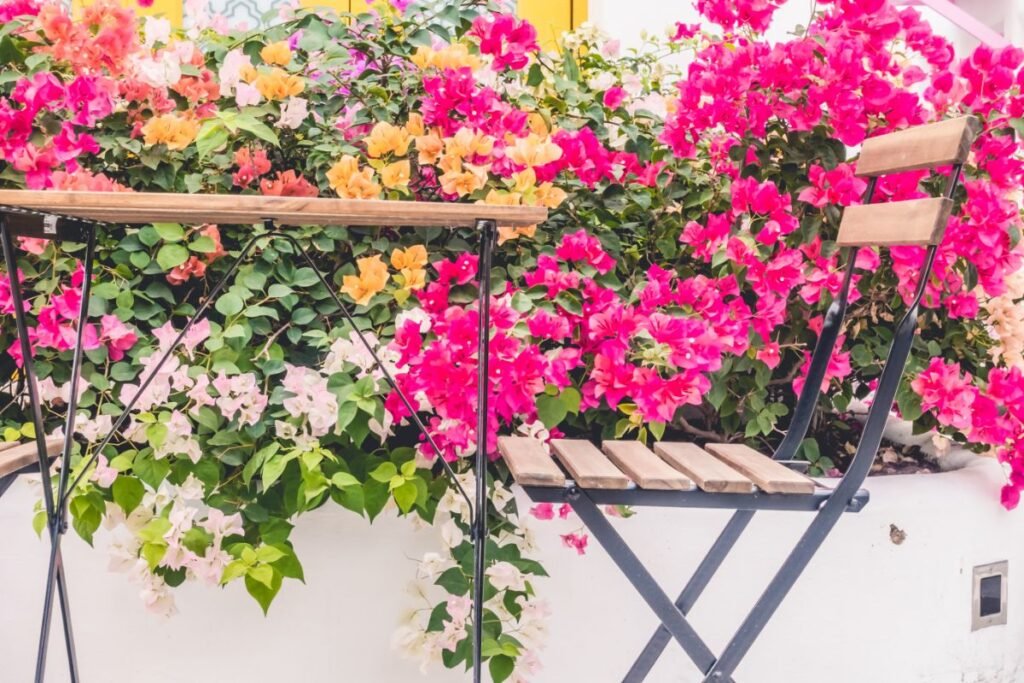
If we prefer to create combinations among several plants, let’s remember to arrange them in borders in relation to their size and their vegetative growth. Let’s also think about all the seasons, identifying those species that can give an accent of color with flowers or foliage even during the coldest periods. If you live in areas with very hot summers and your terrace faces south, opt for varieties with dense and copious planting that can create shade during the sunniest hours. Let’s also remember to use specific medium for ornamentals or for horticultural species by carrying out routine maintenance checks to also verify plant health.
Furniture and flooring
We complete the project with specific outdoor furniture, choosing according to the final space and our personal preferences and taking into account the architectural style of the house and complete them with cushions and design elements.
For pots and planters we have a wide range of choices. Let’s try to find a connection among the individual elements, avoiding to insert styles that are too different from each other and so to generate a situation of visual disorder. We can for example opt for groups of pots of different heights to create movement and perspective depth. Hanging pots are also decorative, as are those mounted on the wall in modules that can function as a vertical green wall to make the most of all the available space.
If we then had a suitable total surface area we could have treated wooden seats made that would simultaneously function as raised flower beds in the rear part to develop the terrace on two levels.
For flooring, where possible, we can choose natural materials such as stone, terracotta or wood, properly treated to be weather-resistant and non-slip; the light color reflects light and can make our terrace appear optically more spacious than dark flooring.
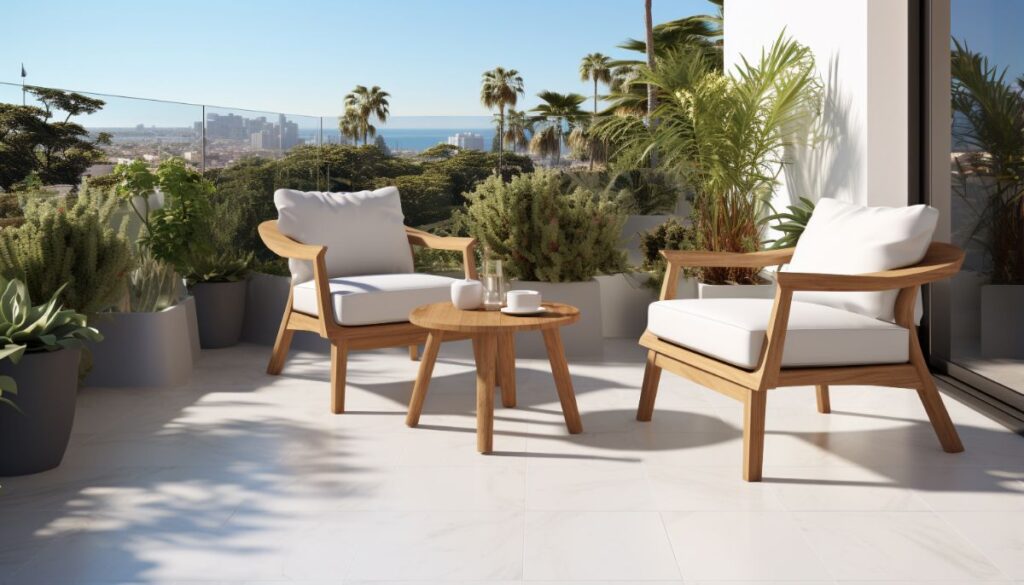
Irrigation and lighting
To ensure an adequate water supply to our plants, especially during the hottest periods, have an automatic irrigation system with programmable control unit, very useful even when you go on holiday!
Let’s add a note of atmosphere by placing external lights in strategic points, for example lanterns, hanging lamps or even a designer chandelier to create an intimate and welcoming atmosphere, especially in the evening. You can also enhance an architectural element such as a sculpture or a group of vases with plants acting as a focal point using diffused light spotlights.
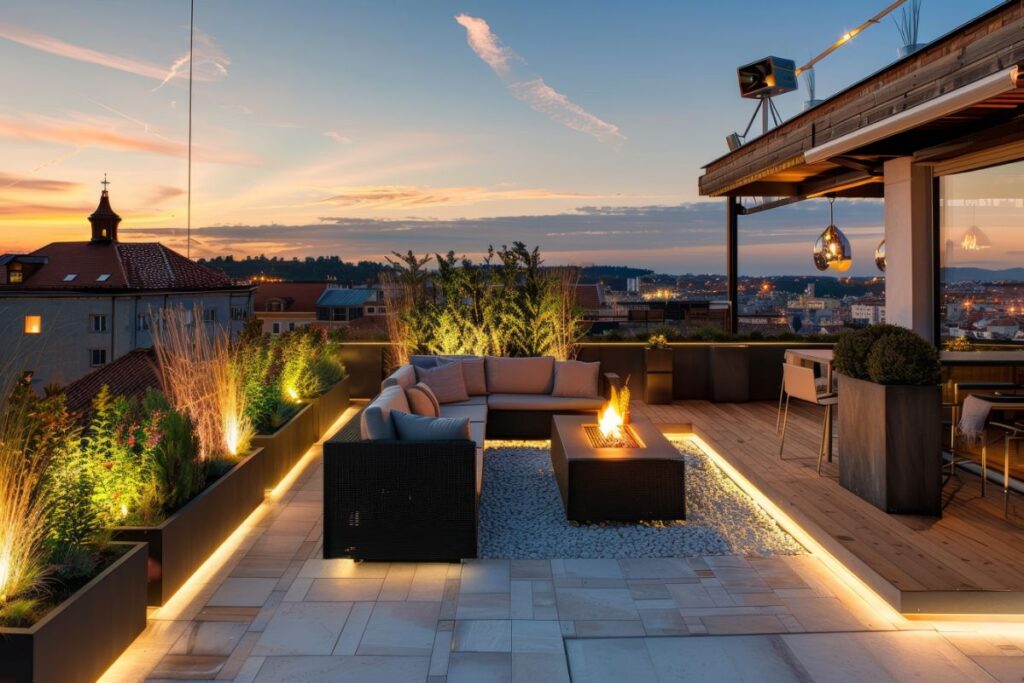
Whatever the size of our terrace the important thing is to follow some design and maintenance rules to create a welcoming and elegant outdoor environment all year round.

